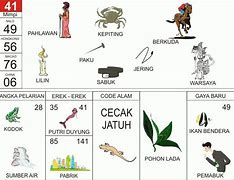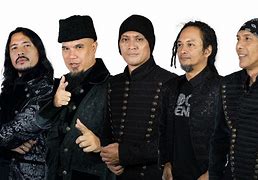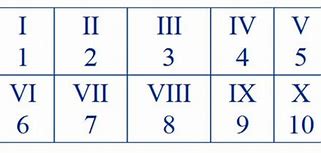
Traditional Japanese doll
A Daruma doll (Japanese: 達磨, Hepburn: daruma) is a hollow, round, Japanese traditional doll modeled after Bodhidharma, the founder of the Zen tradition of Buddhism. These dolls, though typically red and depicting the Indian monk, Bodhidharma, vary greatly in color and design depending on region and artist.[1] Though considered a toy by some, Daruma has a design that is rich in symbolism and is regarded more as a talisman of good luck to the Japanese. Daruma dolls are seen as a symbol of perseverance and good luck, making them a popular gift of encouragement.[2] The doll has also been commercialized by many Buddhist temples to use alongside the setting of goals.
When purchased, the figure's eyes are both blank white. The owner selects a goal or wish and paints in the left eye of the figure's two eyes with Chinese or Japanese ink. Once the goal is achieved, the right eye is filled in.[3]
Bodhidharma was a Buddhist monk who lived during the 5th/6th century CE. He is traditionally credited as the transmitter of Ch'an (Zen) to China. Little contemporary biographical information on Bodhidharma is available, and subsequent accounts have become layered with legend.[4] According to one tradition, Bodhidharma gained a reputation for, among other things, his practice of wall-gazing. Legend claims that he sat facing a wall in meditation for a period of nine years without moving, which caused his legs and arms to fall off from atrophy.[5] Another popular legend is that after falling asleep during his nine-year meditation he became angry with himself and cut off his eyelids to avoid ever falling asleep again.
According to the principal Chinese sources, Bodhidharma came from the Western Regions, which refers to Central Asia but may also include the Indian subcontinent, and was either a "Persian Central Asian" or a "South Indian ... the third son of a great Indian king."[6] Throughout Buddhist art, Bodhidharma is depicted as an ill-tempered, bearded, wide-eyed non-Chinese person. He is referred as "The Blue-Eyed Barbarian" (Chinese: 碧眼胡; pinyin: Bìyǎnhú) in Chan texts, although note that while the translation "barbarian" is derogatory, in Chinese it is simply descriptive of non-Chinese origin.
Hasil Pencarian Doll Boneka Jepang
Maaf, barangnya tidak ketemu
Coba cek lagi kata pencarianmu.
Rượu sake Daruma, sake Sen mang hương vị đặc trưng của nền văn hóa ẩm thực Nhật Bản. Nét độc đáo để làm nên rượu sake đó chính là men Koji, nếu thiếu thành phần này sẽ không còn là rượu sake nữa. Cách chế biến men koji và ủ nấu rượu là bí quyết riêng cho mỗi cơ sở sản xuất để đưa ra mức độ thơm ngon khác nhau. Quy trình làm men koji là một nghệ thuật, được đúc kết từ kinh nghiệm gia truyền lâu năm của mỗi xưởng sản xuất. Đồng thời phải kết hợp khéo léo các thành phần như gạo sake, độ PH, thành phần khoáng chất trong nước mới tạo nên loại men Koji chất lượng tốt.
Từ các nguyên liệu cao cấp, đã cho ra một loại rượu Sake Nhật đặc biệt thơm ngon. Rượu sake được xem là quốc tửu, là thức uống không thể thiếu trong các lễ hội của đất nước Nhật Bản.ừ 1 thùng.
Physical features and symbolism
Daruma’s design, particularly the shape, color, eyes and facial hair, each have its own history and symbolic meaning.
Darumas are still usually made of papier-mâché, have a round shape, are hollow and weighted at the bottom so that they will always return to an upright position when tilted over. In Japanese, a roly-poly toy is called okiagari, meaning to get up (oki) and arise (agari). This characteristic has come to symbolize the ability to have success, overcome adversity, and recover from misfortune.[8] In Japanese popular culture on cards, banners and books, Daruma is often illustrated alongside the phrase "Nanakorobi Yaoki" (七転び八起き), translated to mean "seven times down, eight times up". While some traditional Daruma dolls have flat bases, the Sankaku or Triangle Daruma (三角だるま) is constructed from a rolled cardboard cone attached to a rounded clay base so that it always stands straight when tilted.[11]
The tumbler doll style is similar to an earlier toy called the Okiagari Koboshi, a little self-righting monk which was popular in the Kinki region during the mid-17th century. The original okiagari toy, however, is said to have been introduced from Ming China around 1368–1644.[13]
Though it is not certain, the origins of Daruma's traditional red coloring probably came from the color of priest's robes. Reliable sources in English are hard to find, but one Japan-based website cites this red as being the "color of the robe of a high-ranking priest.[14] The author then concludes that "since Daruma was the founder of the Zen Sect, he must have worn a red robe." The art historian James T. Ulak has documented a history of depictions of the Bodhidharma wearing lavish red robes, prior to representations of him as a doll, in an article entitled "Japanese Works in The Art Institute of Chicago."[15]
By virtue of his red robes, Daruma has come to play a role in recovering from sickness. During the late Edo period (1603-1868), red was believed to have a strong association to smallpox. Hartmut O. Rotermond, author of Demonic Affliction or Contagious Disease?, describes that in Edo and surrounding cities, there were many outbreaks of measles and smallpox. In present-day Japan, there are many red shrines dedicated to a God of Smallpox, which had a particular liking for red. These shrines were built in response to those outbreaks.[16] Believing that the God of smallpox, if pleased, would spare the afflicted child, the Japanese would often stretch out ropes around the house strung with red paper strips, have the child wear a red robe, and make a small altar for the God to put talisman-like Daruma figurines on.[17] These precautions were also used to warn others that sickness was in the house, and to encourage cleanliness around the sick. The red of Daruma, however, was used to pacify the God, while the image of okiagari was to encourage the patient to recover as quickly as they fell ill.[8] Daruma are also sold as a set of five colors – blue, yellow, red, white and black – called Goshiki Daruma. These days, daruma can also be found in colors other than red, including gold, which is meant to bring luck in financial matters.
The eyes of Daruma are often blank when sold. Monte A. Greer, author of Daruma Eyes, described the "oversized symmetrical round blank white eyes" as a means to keep track of goals or big tasks and motivate them to work to the finish. The recipient of the doll fills in one eye upon setting the goal, then the other upon fulfilling it. In this way, every time they see the one-eyed Daruma, they recall the goal. One explanation how this custom started says that in order to motivate Daruma-san to grant your wish, you promise to give him full sight once the goal is accomplished. This practice might also have something to do with the "enlightenment", the ideal attainment of Buddhism. This custom has led to a phrase in Japanese translated as "Both Eyes Open". Referring to "opening" the second eye, it expresses the realization of a goal.[18] Traditionally, the Daruma was purchased as a household item, and only the head of the household would paint in the eyes.[19]
One example of this is politicians during election time. Political parties have often been shown at their headquarters with large Daruma dolls and amulets purchased from local temples as a prayer for victory. This practice was highlighted in a 1967 article in Time magazine: "Last week, in the Tokyo headquarters of Japan's ruling Liberal Democratic Party, Premier Eisaku Satō dipped a sumi brush into an ink stone and with swift strokes daubed in the dark right eye of his Daruma. 'The eyes,' he remarked when he had finished, 'are as big as my own.'"[20]
The Matsukawa Daruma (松川だるま) is produced with the eyes already painted, with the purpose of watching over a family's household.[21] These intricate figures are more slender than traditional Daruma and typically feature blue coloring and a base molded (or simply painted) in the form of the ship that transports the Seven Lucky Gods.[22]
Daruma's facial hair is a symbolic representation of the animals well known in Asian culture to embody longevity: the crane and the tortoise. The eyebrows are in the shape of a crane, while the cheek hair resembles the shell of the tortoise. A Japanese-based website states that originally, there was a snake or dragon depicted across the moustache and cheeks, but was changed to tortoise to emphasize the desire for longevity.[23] In this way, Daruma was designed to match the Japanese proverb "The crane lives 1000 years, the tortoise 10,000 years".
At the end of the year, all the Daruma are brought back to the temple they were purchased from for a traditional burning ceremony.[18] This ceremony, called the daruma kuyō (だるま供養), is held once a year, usually right after New Year's Day. The most renowned of these events are held at the Nishi-Arai Daishi Temple (Tokyo), and the Dairyū-ji Temple (Gifu). At these events, people bring the Daruma figures they had used that year to the temple. After expressing gratitude to them, they turn them over to the temple and buy new ones for the next year. All of the old Daruma figures are burnt together in the temple. After a solemn display of the monks' entry, reading of the sutras and blowing of horns, the tens of thousands of figurines are then set aflame.
History and commercialization
The current popular symbolism associated with Daruma as a good luck charm in part originated at Shorinzan Daruma Temple, in the city of Takasaki (Gunma Prefecture, north of Tokyo). Josef Kyburz, author of "Omocha": Things to Play (Or Not to Play) with, explained that the founder of Daruma-Dera would draw New Year’s charms depicting Bodhidharma. The parishioners would keep these charms to "bring happiness and prosperity and ward off accidents and misfortune".[8]
It is believed that the Daruma figurine then originated from this region when the ninth priest, Togaku, found a solution to handle the constant requests of the parishioners for new charms. The charms were always given with an effectiveness of one year, so the people required new ones every year. He solved this by entrusting them with the making of their own Daruma charms near the beginning of the Meiwa period (1764–72). The temple made wooden block molds for the people to use. The peasants then used these molds to make three-dimensional papier-mâché charms.[9]
Kyburz notes that though it is unknown when the Daruma figurine combined with the tumbler doll; the two were well recognized as synonymous by the mid-19th century. The doll quickly grew in popularity, becoming a mascot of the region. This was due greatly in part to fact that the majority of the families were silk farmers, a crop which requires a great deal of luck for success.[8]
There is an annual Daruma Doll Festival (達磨市, daruma-ichi) held by the city of Takasaki in celebration of being the proclaimed birthplace of the Daruma doll. The celebration is held at the Shorinzan, the name of Takasaki's "Daruma-Dera". According to the Takasaki city website, "Over 400,000 people from all over the Kanto Plain come to buy new good-luck dolls for the year. Takasaki produces 80% of Japan's Daruma dolls."[10] The festival also features a 24-hour reading of sutras by the Shorinzan monks for world peace.
Feminine representations
Daruma dolls also come in the form of Princess Daruma (姫だるま, hime daruma) and Lady Daruma (女だるま, onna daruma). This contrasts greatly with traditional representations of Bodhidharma, who, accredited as the father of many martial arts, has traditionally been depicted as very masculine with rough facial hair.[24] H. Neill McFarland, Professor of Theology, discusses the feminine representations of Bodhidharma in his article Feminine Motifs in Bodhidharma Symbology in Japan. The answer to this anomaly lies in the social changes at the time, developing in the Edo Period. The class distinctions placed the merchants at the bottom, who in turn developed their own culture focusing on humor and poking fun at what those of higher class held sacred. This is evident in the depiction of Bodhidharma as a prostitute since prostitutes displayed the same "okiagari" resilience. Famous pieces of art depicting Bodhidharma were also redrawn with a woman in his place.[24]
With the inception of the Daruma doll, the Onna Daruma doll quickly followed. Though the aforementioned examples of feminine motifs of Bodhidharma were satirical, the doll forms maintain the same wholesome image of a bringer of good luck.[25]
Many children's games make mention of Daruma. In Japanese, snowmen are called "Yukidaruma" (Japanese: 雪だるま), literally snow daruma. Possibly because the shape is related to Daruma, they usually only have two sections instead of three.[2] Darumasan ga Koronda is an equivalent to the American Red Light/Green Light game. Daruma Otoshi (だるま落とし) is a traditional game played with a daruma doll in five pieces, usually in the colors of the rainbow, from top to bottom: head – a man's face, blue, green, yellow, red. The game is played by using a small hammer to hit each of the colored pieces, from bottom to the top, without letting the pieces fall during the game.
DARUMA - BIỂU TƯỢNG CỦA SỰ KIÊN TRÌ, THÀNH CÔNG & MAY MẮN
Daruma là một dạng búp bê cầu nguyện truyền thống của Nhật Bản, là biểu tượng cho sự kiên trì, quyết tâm, thành công và cũng là một trong số những món quà lưu niệm được du khách mua nhiều nhất khi đến Nhật.
Daruma được mô phỏng theo hình tượng của Bồ Đề Đạt Ma người khai sinh ra Thiền Tông tại Nhật Bản, sống khoảng TKV - TKVI. Về màu sắc và thiết kế của Daruma, nếu quan sát kĩ bạn sẽ thấy những chi tiết nhỏ thú vị như:
Daruma thường không được vẽ mắt. Có hai cách lý giải vì sao daruma thường không có mắt. Thứ nhất là vì Daruma được mô phỏng theo hình tượng Bồ Đề Đạt Ma và theo truyền thuyết Ngài đã tự cắt bỏ mí mắt của mình để tập trung cho việc tu luyện. Thứ hai là vì theo truyền thống khi sử dụng Daruma để ước nguyện người Nhật sẽ
- Bước 1: Lựa chọn loại Daruma phù hợp với mong ước của bản thân như họp tập, gia đình hạnh phúc, công việc kinh doanh phát đạt,…
- Bước 2: Vẽ một mắt cho Daruma như bắt đầu một lời cam kết và cầu mong các vị Thần hãy giúp điều ước của bạn trở thành sự thật
- Bước 3: Sau khi đã đạt được điều mình mong muốn, vẽ con mắt còn lại cho Daruma thay lời cảm ơn đến các vị Thần
Ngoài ra, việc nhìn thấy Daruma với một mắt mỗi ngày cũng tạo động lực nhắc nhở bạn - người đã xác định cho bản thân một mục tiêu rõ ràng cần cố gắng, nỗ lực mỗi ngày, sớm hiện thực hoá mục tiêu đề ra để Daruma của bạn được vẽ con mắt còn lại.
Daruma truyền thống có màu đỏ (cầu may mắn và tài lộc). Ngày nay, ở Nhật có rất nhiều lao Daruma bắt mắt với những ý nghĩa khác nhau như
- Màu hồng: tình yêu, thu hút sự lãng mạn và đam mê
- Màu vàng: may mắn về tài chính
- Màu xanh lá cây: cầu sức khoẻ
- Màu đen: thành công trong các dự án kinh doanh
- Màu tím: sức khỏe và tuổi thọ
- Màu xanh lam: học hành giỏi giang, mở mang kiến thức
- Màu vàng: giàu có và thịnh vượng
- Màu trắng: tình yêu và sự hòa hợp
Gương mặt của của Daruma, nếu nhìn kĩ bạn có thể thấy hoa văn cho lông mày có hình chim hạc, còn râu có hình đuôi rùa. Ở Nhật Bản, chim hạc và rùa là hai biểu tượng cho sự trường thọ (như câu nói nhân gian chim hạc sống 1,000 năm, rùa sống 10,000 năm).
Sử dụng vàng lá được làm tại thành phố KanazawaSản phẩm thủ công
Kích thước ngựa: 2cm (khoảng bằng kích thước đồng 1 yên)Kích thước bao bì: 4.2cm×5.0cm
Offenbar hast du diese Funktion zu schnell genutzt. Du wurdest vorübergehend von der Nutzung dieser Funktion blockiert.























